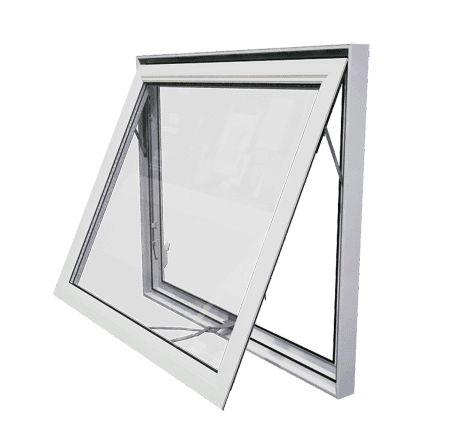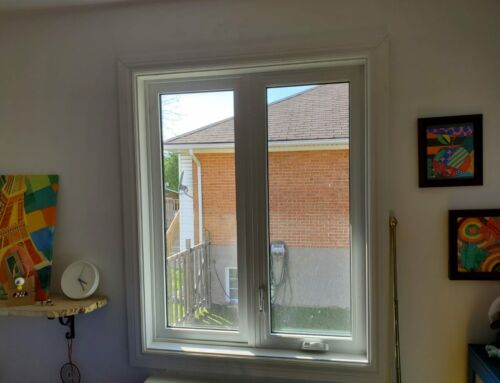We frequently receive calls from customers reporting that their windows have condensation, are molding, and appear black and unpleasant. Changing windows is not necessarily the direct solution; there are also preliminary steps you would like to take to prevent the molding from spreading and try to eradicate the roots of the issue. Let’s begin first by learning more about mold, what it is, and how it grows.
 Which type of mold exists out there?
Which type of mold exists out there?
Here’s a more straightforward explanation of several typical molds and their potential locations:
- Cladosporium: This mold prefers both warm and chilly environments and can be brown, green, or black in color. It is typically found on wood, carpets, or textiles, but it can also reside in air conditioning and heating ducts.
- Penicillium: a yellow, green, or blue fuzzy mold. In particular, if there has been water damage, look for it in insulation, basements, and under carpets.
- Aspergillus: This powdery-looking mold can be green, white, or gray in color with dark flecks. It grows well in low-oxygen environments such as attics, basements, textiles, walls, and even on dry food. Aspergillus can be harmful to those with weakened immune systems.
- Alternaria: A fuzzy mold that’s white with black spots. It likes to grow on fabrics and wallpaper, especially near windows and air conditioners and in damp areas like bathrooms and kitchens.
- Aureobasidium: This mold is pink with black spots and is mostly found on wood, walls, caulking, and grout.
Black is the most frequently seen on indoor windows, which suggests a high humidity level. But other reasons may also be related to the appearance of mold in your Montreal-based home.
Symptoms of mold exposure:
Some people, but not all , may experience runny noses, dry coughs, eye irritation, increased allergies , rash, or headaches. Eventually, the level of mold should be high enough to affect anyone’s health. Second, the exposure should be direct and prolonged enough to affect your health. And third, this is more likely to only impact really allergic people or those with weak immune systems. Overwise minor mold will not cause any health damage in the short run for your health.
Do not panic! We bet your house is not in such a condition that you will absolutely need to vacate it! Nevertheless, we still advise you to proceed with mold removal. The majority of houses in the Greater Montreal Area have some mold issues; therefore, it is not an uncommon problem, but it is still a problem that requires special care.
 Causes of mold in your Montreal house:
Causes of mold in your Montreal house:
The first and most frequent cause of mold in your house is an excessive level of humidity. Colonies of mold grow well in wet conditions. If at all feasible, the humidity level should be between 30 and 50%. In such a case, we recommend you get yourself a dehumidifier to dry the humid air.
The next cause is condensation on your windows. Excessive condensation on your windows may also be the source of mold growth. While condensation on the outside or inside of your windows is not always a reason for concern, it may lead to the growth of mold on your windows! The reasons for condensation are usually limited. The first option is that your windows were badly installed. And option two is that when you cook or take a shower, you don’t use the vent. Yes, there is a reason why bathrooms have a vent and why the kitchen also has a vent when you boil your Italian sauce.
As per our previous point, wrongly installed windows can cause leaky windows. The most frequent reason is a faulty sealant around the windows. When they did the installation, they did not properly install the sealant, so the windows had water leakage.
Faulty ventilation may cause water to begin building up. Humidity and most will be captured and stored inside your house without exiting possibilities and cause the phenomenon of wet windows with black, white, or pink mold.
 How do you prevent windows from getting moldy ?
How do you prevent windows from getting moldy ?
Manage the humidity level in your home by trying to keep it between 30% and 50% of the time. To help you maintain a low level, consider using a dehumidifier or air conditioner. You will need to check the humidity levels more than once a day since they fluctuate throughout the day due to variations in air temperature and moisture content.
Use an air conditioner or humidifier during the most humid months of the year. This will help you with your humidity level and even improve your breathing!
Try to keep your home well ventilated. Keep your interior doors open; don’t permanently keep bathrooms or kitchens closed. Such an option can cut down on the condensation level. Use exhaust fans in bathrooms and kitchens for any time you are dealing with anything hot.
If your house has any leaky issues, such as a flooded basement, clogging, broken windows, or cracks, it will help you prevent moisture exposure and minimize mold growth.
Another piece of advice is that your furniture and accessories can absorb moisture too, so if your house has carpets everywhere, 300 decorative pillows, and fluffy couches, then be aware they are able to get mold too.
What should you do if you’ve tried all of our advice and it hasn’t worked?
In such a case, window replacement might be your only solution. We are happy to help you replace your windows anywhere within the Greater Montreal Area. We offer multiple options for windows, from designs and colors to different types of openings and sizes. Once you pick Factory Direct Montreal for your window and door installation, you will want to change them early! And no, not because they are bad, but because you will simply miss the spectacular service that we offer! Quality service is not always a luxury; it is a standard we set in the window industry in the Montreal area.


 Which type of
Which type of  Causes of mold in your Montreal house:
Causes of mold in your Montreal house: How do you prevent
How do you prevent 




